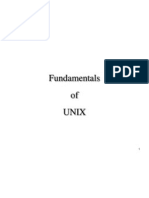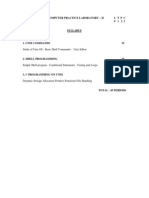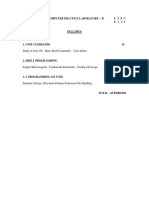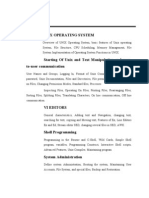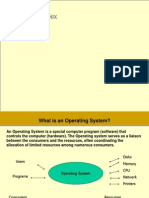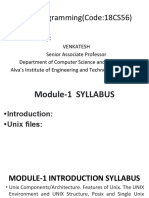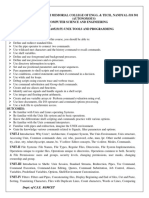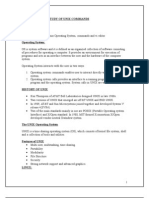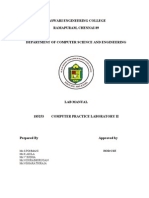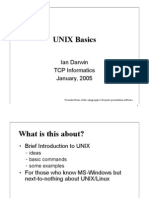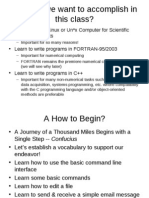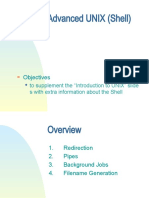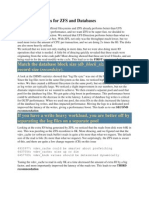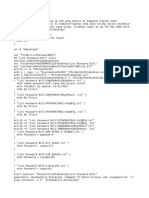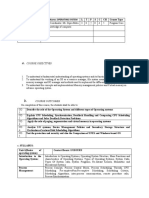0% found this document useful (0 votes)
147 views48 pagesIntroduction To UNIX: Motivate The Use of UNIX Introduce Basic UNIX Features (E.g. Using Directories, Files) Introduce
This document provides an introduction to the UNIX operating system. It discusses the objectives of learning UNIX, including basic features like directories and files. It also introduces popular text editors like vi and emacs. The document then covers various UNIX topics like the file system, directories, files, email, and vi/emacs. It aims to provide background on UNIX, explain why it is useful, and discuss its history. It also offers guidance on finding UNIX help resources and getting started with basic commands.
Uploaded by
Sangram AnandCopyright
© Attribution Non-Commercial (BY-NC)
We take content rights seriously. If you suspect this is your content, claim it here.
Available Formats
Download as PPT, PDF, TXT or read online on Scribd
0% found this document useful (0 votes)
147 views48 pagesIntroduction To UNIX: Motivate The Use of UNIX Introduce Basic UNIX Features (E.g. Using Directories, Files) Introduce
This document provides an introduction to the UNIX operating system. It discusses the objectives of learning UNIX, including basic features like directories and files. It also introduces popular text editors like vi and emacs. The document then covers various UNIX topics like the file system, directories, files, email, and vi/emacs. It aims to provide background on UNIX, explain why it is useful, and discuss its history. It also offers guidance on finding UNIX help resources and getting started with basic commands.
Uploaded by
Sangram AnandCopyright
© Attribution Non-Commercial (BY-NC)
We take content rights seriously. If you suspect this is your content, claim it here.
Available Formats
Download as PPT, PDF, TXT or read online on Scribd
/ 48

